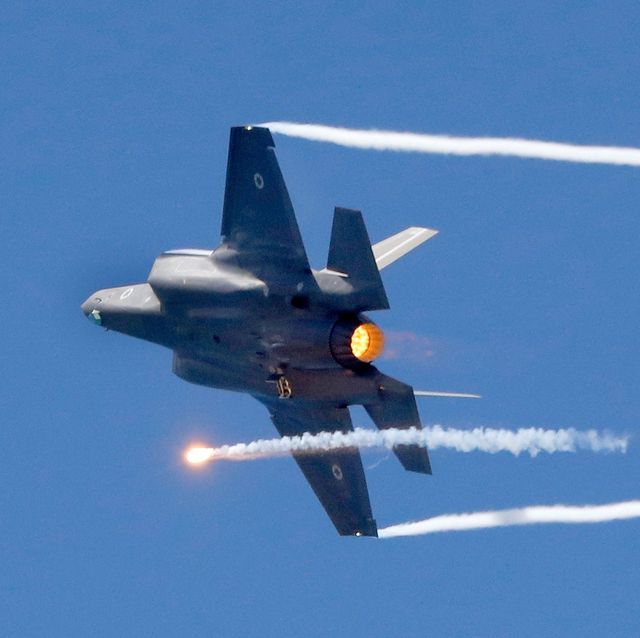It’s been a while since we checked in on our old friend, the F-35 Joint Strike Fighter, a.k.a. The Flying Swiss Army knife, a.k.a. The Money Pit in the Sky. This undying tribute to what Barney Frank used to call “military Keynesianism” continues to amaze and astound in its ability to do everything except be a proper airplane. From Air Force Magazine:
Speaking before the House Armed Services subcommittee on tactical air and land forces, acting Assistant Secretary of the Air Force for Acquisition, Technology, and Logistics Darlene Costello said 41 of the fifth-generation fighters don’t have an engine due to maintenance issues, while 56 F135 power modules are currently being repaired at Tinker Air Force Base, Okla. ...
Lt. Gen. Eric T. Fick, F-35 program executive officer, confirmed Costello’s numbers while noting that the exact number can be calculated in different ways. Rep. Donald Norcross (D-N.J.), however, expressed discomfort about providing funds to buy more F-35s while a significant number of jets are already in the service in need of engines. “The idea of rolling [out] a new aircraft with an engine while others are sitting—and I’m hearing the numbers and we can argue over which ones they are—but [that is] certainly something that is a real concern,” Norcross said.
The Air Force currently has 272 of these gobblers, which means that nearly 15 percent of them are currently without engines, which are considered by most experts to be vital to powered flight. Luckily, however, there is a simple explanation for this: the whole program is completely screwed.
Rep. Mike Turner (R-Ohio) cited a Government Accountability Office finding that fewer than four percent of F-35 engines have been delivered on time, asking if the military was looking at alternative engine options to keep sustainment and operation costs down. “Engine costs in sustainment are challenging,” Fick acknowledged, while also noting that no F-35 delivery has been delayed because of an engine. “And as we rapidly approach the 2,000-hour first scheduled engine removal, we will start to bear those costs in the sustainment of the air system. And we also know that we have begun to reach a flat or a flatter spot in the learning curve relative to the overall cost of production engines.
“When I couple that with the notion that post-the current Block 4 content, we will likely need increased power and increased thermal management capability from our propulsion system, I think that the need to look for options from a propulsion system perspective is present.”
Remember: engine costs in sustainment are challenging, you suckers.
Defense News has some additional information about why the Air Force can’t seem to equip its Fifth Generation fighter with engines.
The problem, according to the F-35 joint program office, is twofold. First, the F135 Heavy Maintenance Center at Tinker Air Force Base, Okla., has not been able to process engines through scheduled depot maintenance as quickly as projected. Second, maintainers are discovering “premature distress of rotor blade coatings” in a “small number” of engine power modules, creating more repair work and contributing to the backlog. A defense official who spoke to Defense News on background called the issues a “serious readiness problem.” By 2022, roughly 5 to 6 percent of the F-35 fleet could be without engines due to scheduled depot maintenance as well as unscheduled engine removals caused by F135s in need of repair. Leaders hope that corrective actions will keep the program from exceeding that threshold, but the defense official confirmed that as many as 20 percent of F-35s could be impacted by the engine shortage if those fixes do not work and no further action is taken.
Anybody want to give me odds?

Charles P Pierce is the author of four books, most recently Idiot America, and has been a working journalist since 1976. He lives near Boston and has three children.













